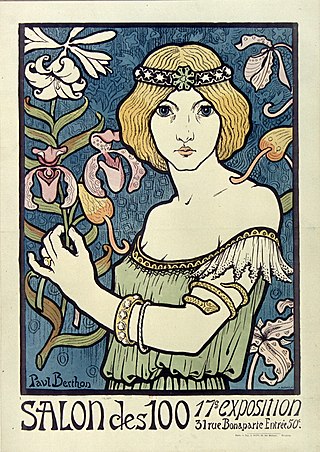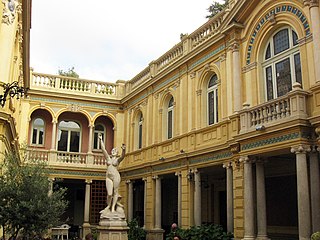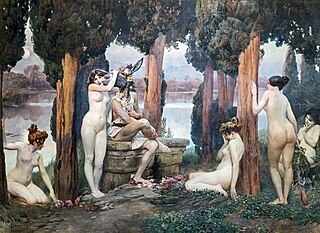
JOB rolling papers are a popular brand of cigarette paper produced by Republic Tobacco in Perpignan, France.

JOB rolling papers are a popular brand of cigarette paper produced by Republic Tobacco in Perpignan, France.
In 1838, a French craftsman named Jean Bardou came up with the idea for a booklet of rolling papers made of thin, pure rice paper. [1] Bardou's trademark was the initials "JB" separated by a large diamond. The diamond was often mistaken for a capital O by consumers, who began referring to the papers as JOB, thus the brand name was born. [2] By 1849 he filed for a patent for "Papier JOB". [3]
Jean Bardou died in 1852. [4] The JOB brand was auctioned in August 1853 and bought for 16,000 francs by Jean Bardou's son Pierre Bardou. [5] His brother Joseph Bardou had formed a separate company making "le Nil" cigarette papers, with a laughing elephant as its logo. [6] In January 1854, Pierre began making his own paper in Perpignan. A range of flavored papers included licorice, anise, vanilla, juniper, and camphor. Careful attention to marketing included development of premium or luxury papers, with attractive boxes designed for ladies. [7]
At the end of 1858, Pierre Bardou bought a large house at 18 rue St Sauveur in Perpignan for 40,000 francs, originally an apartment building, which he divided into one area for manufacturing and another for his residence. [7] Pierre had a glass skylight installed in his "Hôtel de l’Industrie du Papier a Cigarette" factory for illumination. [6] It was used for manufacture from 1861 to 1879 and employed 80 workers in 1861. In 1865–66 a workshop was installed for lithography and printing. A second building was acquired at 13 St Sauveur, then additional buildings until an entire block was occupied, with the manufacturing process becoming increasingly automated, driven by steam power. By 1889 the Job company employed 290 women and 40 men. [7]
In the late 1890s, the company hired art nouveau artist Alphonse Mucha, as well as many other artists, to design advertising posters for the brand. [8] Mucha drew a sinuous long-haired goddess holding a rolled cigarette. The image was inspired by Michelangelo's Sibyls from the Sistine Chapel. [9] The poster image was so popular that it was sold as a lithograph.
In 2008, the company commissioned Stuckist artist, Paul Harvey to create a campaign series of posters with a stylistic reference to Alphonse Mucha. [10] Harvey made works featuring famous double acts to emphasize the sales message of "The Original Double", a reference to the twin-size packets of papers made by Job. [10] Harvey's enthusiasm for the project came about because "Mucha is one of his heroes", said Mark Ross, the director of Glorious Creative agency managing the campaign. [10] The work created some controversy: [11] Gilbert and George endorsed the images, but The Mighty Boosh and The White Stripes were not pleased to be featured. [11] Famous Doubles, a show of the original paintings used for the posters, was promoted at the Wanted Gallery in Notting Hill by Fraser Kee Scott, director of the A Gallery. [11] [12]
The trademarks 1.0, 1.25, 1.5 and 2.0 are property of DRL Enterprises, Inc.
In the movie Maximum Overdrive , which featured Emilio Estevez being chased by 'possessed' trucks, a JOB 1.5 truck was shown as one of the key vehicles.
Reptiles, a 1943 lithograph by M. C. Escher, shows a package of JOB rolling papers.
In the 1981 film Nice Dreams, Tommy Chong says he has been sponsored by JOB papers.
In an episode of The Office titled "Viewing Party," a poster for JOB papers can be seen on Gabe Lewis's wall. It is pointed out that the poster used to be a real french advertisement by Kelly Erin Hannon.
JOB cigarette papers can be seen on the front cover of Mott The Hoople's debut album.

Alfons Maria Mucha, known internationally as Alphonse Mucha, was a Czech painter, illustrator, and graphic artist. Living in Paris during the Art Nouveau period, he was widely known for his distinctly stylized and decorative theatrical posters, particularly those of Sarah Bernhardt. He produced illustrations, advertisements, decorative panels, as well as designs, which became among the best-known images of the period.

Rolling paper is a specialty paper used for making cigarettes. Rolling papers are packs of several cigarette-size sheets, often folded inside a cardboard wrapper. They are also known as 'blanks', which are used to encase tobacco or cannabis. It may be flavoured.

Zig-Zag is a brand of rolling papers that originated in France. The Zig-Zag brand produces primarily hand-rolled tobacco related products such as cigarette rolling papers, cigarette tubes and rolling accessories.
Rizla, commercially styled Rizla+., is a French brand of rolling papers and other related paraphernalia in which tobacco, marijuana, or a mixture of the two, is rolled to make handmade joints and cigarettes.

Céret is a commune in the Pyrénées-Orientales department in southern France. It is the capital of the historic Catalan comarca of Vallespir.

Paul Arthur Harvey is a British musician and Stuckist artist, whose work was used to promote the Stuckists' 2004 show at the Liverpool Biennial. His paintings draw on pop art and the work of Alphonse Mucha, and often depict celebrities, including Madonna.
The year 1895 in art involved some significant events.

Republic Tobacco LP is a multinational wholesaler, distributor, and retailer of tobacco, based in the Chicago suburb of Glenview, Illinois, United States.
Canson is a French manufacturer of fine art paper and related products. The company, established in 1557 by the Montgolfier family, produces papers for different uses in fine art, including watercolor, oil, acrylic, photo papers, among others.
Events from the year 1895 in France.

L'Estampe Moderne appeared in 1897-1899 as a series of 24 monthly fascicles, each of 4 original lithographs, priced at 3 francs 50 centimes and printed by Imprimerie Champenois of Paris. Many accomplished European Art Nouveau painters contributed works to this publication. The richly lithographed prints had as a blindstamp, the imprint of a young woman's profile in the lower right corner. The prints are much sought after in the current art world.
The French firm Susse Frères manufactured a daguerreotype camera which was one of the first two photographic cameras ever sold to the public. The company was also engaged in the foundry business and owned a large foundry in Paris.

Salon des Cent was a commercial art exhibition in Paris, based at 31 Rue Bonaparte. The Salon sold color posters, prints and reproductions of artwork to the general public at reasonable prices. It was established in February 1894 by Léon Deschamps, founder of La Plume an avant garde literary and artistic magazine. It became known for its exhibitions showcasing the works of contemporary graphical artists. The salon held exhibitions until 1900. Many of the posters advertising Salon des Cent exhibitions have themselves become collectors' items.

Jules Pams was a French politician who was a deputy from 1893 to 1904, then a senator from 1904 to 1930. He was Minister of Agriculture from 1911 to 1913 and Minister of the Interior from 1917 to 1920. In 1913 he was a candidate for the presidency of France. He is known for the "Hôtel Pams", a mansion in Perpignan that was redesigned and decorated to his taste, and is now a conference center.

The Hôtel Pams is a mansion in Perpignan, Pyrénées-Orientales, France. It was built between 1852 and 1872 by Pierre Bardou, one of the founders of the JOB cigarette paper company, then transformed in the 1890s into an elegant mansion by his son-in-law Jules Pams, a politician and amateur art-lover. It illustrates the artistic taste of the wealthy bourgeois at the turn of the 20th century. Today the building is owned by the city of Perpignan, and is only occasionally open to the public.

Pierre Bardou-Job was a French industrialist, manufacturer of JOB cigarette papers, and art collector.

Paul-Jean-Louis Gervais was a French painter who was fashionable around the end of the 19th century. He is known for his sensuous paintings of nude women.

Art Nouveau posters and graphic arts flourished and became an important vehicle of the style, thanks to the new technologies of color lithography and color printing, which allowed the creation of and distribution of the style to a vast audience in Europe, the United States and beyond. Art was no longer confined to art galleries, but could be seen on walls and illustrated magazines.

Jeanne Louise Marie Euphrasie Atché, known as Jane was a French painter and poster artist in the Art Nouveau style.

The JOB collection is a production of graphic works consisting of calendars, posters and postcards advertising the JOB rolling paper factory. Artistic in character, it was illustrated by renowned painters and poster artists, mainly during the Art Nouveau period.